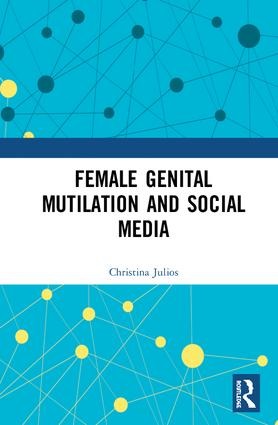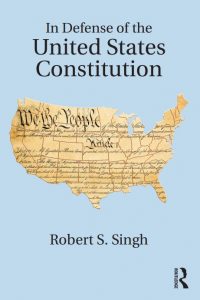MA Renaissance Studies student Tim Griggs recently undertook an internship at the Globe Theatre. He writes about Emilia Bassano, the subject of a new play by Morgan Lloyd Malcolm shown recently on the famous stage, and other educated, ambitious women of the Renaissance period.

“Men, who forgetting they were born of women, nourished of women, and if they were not of the means of women, they would be quite extinguished out of the world, and a final end of them all: do like vipers deface the wombs wherein they were bred.”
(Emilia Bassano, ‘To the Vertuous Reader’, Salve Deus Rex Judaeorum, 1611)
To explore the figure of Emilia Bassano, usually known by her married name of Aemilia Lanyer (or Lanier), a new work, Emilia, created by playwright Morgan Lloyd Malcolm, made its debut in the Globe Theatre in August 2018. The play explores the life and influences of the woman described by the Globe’s new Artistic Director Michelle Terry as ‘often beguiling and always fascinating,’ and whom some consider to have been a muse and inspiration for Shakespeare.
While Bassano’s life has been described in, for example, Susanne Woods’ 1999 Lanyer: A Renaissance Woman Poet, the claim by A L Rowse in 1973 that she was indisputably the ‘Dark Lady’ of Shakespeare’s sonnets has subsequently been widely challenged and discredited, as for example in the 1985 work of Schoenbaum (pp.74-79.) and 1999 work of Wynne-Davies (p.360.). But Bassano’s central achievement is not disputed: her Salve Deus Rex Judaeorum, of 1611, is one of the first among texts by what scholarship now understands to be a substantial output of poetry by women in the seventeenth century.
As part of the background development work undertaken in support of this new work at the Globe, Humayra Yasmin and I were asked to research the lives and influences of a selection of contemporary Elizabethan and Jacobean women, as useful scene-setting context for the life of the relatively little-known Bassano (1569-1645). She was the daughter of an Italian Jewish musician who came to London in the 1530s: her married name was acquired by her marriage in 1592 to Alphonso Lanier, a Court musician of French origin. Her status is succinctly summarised by Lanyer editor and critic Woods: ‘Lanyer was the first woman writing in English who clearly sought professional standing as a poet’ (Woods, p.vii). As Woods notes, Lanyer was preceded by Elizabethan female poets such as Anne Vaughan Lock, Isabella Whitney and Anne Dowrich, and can be described for the quality of her work as ‘a credible peer’ of her early seventeenth-century contemporaries Jonson and Donne (Woods, p.x).
What emerged from a relatively brief process of enquiry was an intriguing and complex picture, countering conventional assumptions about Renaissance women as being ill-educated, powerless and silent. In preparing a series of short biographies of ten notable women of the period, to inform the play’s early development, we discovered a number of instructive themes which tended to run counter to this conventional narrative.

Mary Herbert, Countess of Pembroke 1561-1621
By Nicholas Hilliard
© National Portrait Gallery, London
The first of these themes was the number of women born to power and position who, through family circumstances or the influence of family members, had received significant education despite their gender, and had used this to advantage. Lady Agnes Campbell (1526-c.1590), influential in the Irish resistance to English colonisation, had been educated at the Scottish Court and was fluent in English, French and Latin, and proved an able negotiator and diplomat with the English Court. Mary Sidney Herbert (1561-1621), Countess of Pembroke and the sister of Philip Sidney, with whom she translated the Psalms, was an accomplished poet and translator. She received a classical education, was trained in rhetoric and was fluent in French, Italian and Latin: her father had been educated alongside Edward VI and educated his own children without regard to gender.
The second theme to emerge might be characterised as influence accruing from longevity. Bassano herself lived to the then-considerable age of seventy-six, and many of the women studied exhibited similar qualities of survival. Lady Elizabeth Russell (1528-1609), who enjoyed Court patronage through two marriages and was influential from the 1560s to the 1590s, lived to eighty-one; Lady Dorothy Stafford (1526-1604) survived Elizabeth by a year and died at seventy-eight; Lettice Knollys (1543-1634), Countess of Essex and then of Leicester, and despite incurring the Queen’s displeasure in the 1560s at her relationship with Robert Dudley, lived to ninety-one.
Closeness to power, and an adroit willingness to use it, whether through the Court or through diplomatic influence, was evident in several of the women studied. Dorothy Stafford was for forty years a senior member of Queen Elizabeth’s bedchamber, and herself a Plantagenet with her own claim to the English throne: she efficiently used her position to advance the interests of her family – one son became Ambassador to France and another served as an equerry to Elizabeth. Not all were successful, however: by contrast, Lady Arbella Stuart (1575-1615), though born a Lennox and a first cousin of James VI/I, seen until the early 1590s as the preferred successor to Elizabeth, failed to turn her position to advantage. Though described as ‘not very beautiful but highly accomplished’, she incurred the disapproval successively of Elizabeth and James, and proved unable to gain the approval of either for marriage.
A degree of literary recognition, despite what has been described by Margaret Patterson Hannay as the period’s ‘cultural injunctions to female silence’, could also be found in the period. Mary Sidney, after her brother Philip’s death in 1585, and despite being barred from his funeral on account of her gender, served as a literary patron to those who wished to honour his memory. She supervised the publication of editions of his Arcadia, and wrote poems to praise him. She travelled widely and continued her literary patronage, though on a reduced scale, in later life. (Hannay, ODNB).
And finally, perhaps reflecting a recognition of the educational endowments they had received early in their lives, many of the lives examined showed a strong interest in creating and supporting educational institutions. As examples: Joyce Frankland (1531-1587), a London-born commoner whose two marriages had left her considerable wealth, continued the work of her mother in endowing scholarships, lectureships and other benefactions to Cambridge University. And Frances Radcliffe (c.1531-1589), an aunt to Philip and Mary Sidney, became Lady Sussex by marriage, founded Sidney Sussex College at Cambridge and endowed a lectureship at Westminster Abbey.
Some of these characters would have recognised, and possibly provided fuel for, Bassano’s sharp description of men as ungrateful ‘vipers’. For example, despite her untiring promotional efforts on their behalf, both Dorothy Stafford’s sons were arraigned in the 1580s: one on account of a scheme in support of Mary Queen of Scots, and the other was involved in a plot to assassinate the Queen herself. Agnes Campbell, despite her diplomatic and linguistic skills, was described slightly waspishly by an English courtier as ‘dutifully [using] herself to further the Queen’s service as if she were a natural-born subject’. Lady Agnes’ response to this summary is not recorded.
The women we examined in our researches were intelligent, often well-educated, and ambitious: clearly, the late sixteenth century was not populated purely by subservient females. Emilia Bassano herself, though a commoner, was brought up and educated by Susan, the dowager countess of Kent, whom she addresses in her writing as ‘the noble guide of my ungoverned days’: the environment to which she was thus exposed was strongly Protestant humanist, and she is believed to have read widely. Her poetry can be seen to bear the traces of such an education. According to one biographer, the central poem of her volume of 1611 ‘is remarkable for managing to avoid identifying female virtue with chastity, articulating in its place a feminine mastery of […] the humanist ideal of masculine virtue’. This is a radical departure from the norms of the early seventeenth century.
The depiction of the elusive Bassano and her worldview in Emilia was generally well-received in its run at the Globe. Reviews remarked on the principal character’s qualities as “a subversive feminist spirit” (Independent), and as a “freethinker and writer of imagination and ambition” (Daily Telegraph). Perhaps the play has helped Emilia Bassano finally to be seen in the tradition of the powerful, expressive Renaissance women who preceded her.
Bibliography
- Oxford Dictionary of National Biography [www.oxforddnb.com]
- Rowse, A L, Shakespeare The Man (London: Macmillan 1973)
- Schoenbaum, Samuel, Shakespeare and Others (Washington D.C: Folger Shakespeare Library 1985)
- Woods, Susanne, Lanyer: A Renaissance Woman Poet (Oxford: OUP 1999)
- Wynne-Davies, Marion, ed., Women Poets of the Renaissance (New York: Routledge 1999)

 In order to illustrate the extent and diversity of online anti-FGM activism, I examined various key global online campaigns aimed at eradicating FGM. Featuring social media platforms such as Twitter, Facebook and YouTube, they include: the UN’s International Day of Zero Tolerance for FGM, the WHO’s Sexual and Reproductive Health Programme, The Girl Generation, The Guardian’s End FGM Global Media Campaign and the Massai Cricket Warriors’ campaign. In addition, I documented ten case-studies illustrating the work of prominent international anti-FGM campaigners. In the first instance, my book depicts five African-led narratives from celebrated activists, namely: Efua Dorkenoo OBE, Waris Dirie, Ayaan Hirsi Ali, Jaha Mapenzi Dukureh and Leyla Hussein. The volume also features five international accounts from FGM survivors I interviewed for the book including: Mama Sylla, Chairwoman of La Fraternite Gineenne (Ginea); Masooma Ranalvi, Convenor of We Speak Out (India); Farzana Doctor, Member of We Speak Out (India); Fatou Baldeh, Trustee of Dignity Alert and Research Forum (DARF) (Edinburgh, UK) and Mariya Taher, Co-founder of Sahiyo and Member of U.S. Network to End FGM/C (USA).
In order to illustrate the extent and diversity of online anti-FGM activism, I examined various key global online campaigns aimed at eradicating FGM. Featuring social media platforms such as Twitter, Facebook and YouTube, they include: the UN’s International Day of Zero Tolerance for FGM, the WHO’s Sexual and Reproductive Health Programme, The Girl Generation, The Guardian’s End FGM Global Media Campaign and the Massai Cricket Warriors’ campaign. In addition, I documented ten case-studies illustrating the work of prominent international anti-FGM campaigners. In the first instance, my book depicts five African-led narratives from celebrated activists, namely: Efua Dorkenoo OBE, Waris Dirie, Ayaan Hirsi Ali, Jaha Mapenzi Dukureh and Leyla Hussein. The volume also features five international accounts from FGM survivors I interviewed for the book including: Mama Sylla, Chairwoman of La Fraternite Gineenne (Ginea); Masooma Ranalvi, Convenor of We Speak Out (India); Farzana Doctor, Member of We Speak Out (India); Fatou Baldeh, Trustee of Dignity Alert and Research Forum (DARF) (Edinburgh, UK) and Mariya Taher, Co-founder of Sahiyo and Member of U.S. Network to End FGM/C (USA).


 Treaty making is a site of struggle between those who claim the authority to speak and act on international matters. Being closely connected to questions of war and peace, the power to make treaties in medieval times lay to a large extent in the hands of monarchs. Modern treaties are negotiated by states, although not exclusively so. The conference that produced the Paris Agreement on climate change in 2015, for example, had
Treaty making is a site of struggle between those who claim the authority to speak and act on international matters. Being closely connected to questions of war and peace, the power to make treaties in medieval times lay to a large extent in the hands of monarchs. Modern treaties are negotiated by states, although not exclusively so. The conference that produced the Paris Agreement on climate change in 2015, for example, had  According to that eminent politics scholar, Morrissey (Spent the Day in Bed), we should stop watching the news, “because the news contrives to frighten you.” As far as politics in the United States goes, he surely has a point. Breathlessly excitable news coverage and learned academic pronouncements of the “death” of democracy together induce a sense of bewilderment, producing more heat than light about what ails America. And invariably this is traced to the ultimate political “original sin,” the US Constitution, faulty more by defective design than cack-handed execution.
According to that eminent politics scholar, Morrissey (Spent the Day in Bed), we should stop watching the news, “because the news contrives to frighten you.” As far as politics in the United States goes, he surely has a point. Breathlessly excitable news coverage and learned academic pronouncements of the “death” of democracy together induce a sense of bewilderment, producing more heat than light about what ails America. And invariably this is traced to the ultimate political “original sin,” the US Constitution, faulty more by defective design than cack-handed execution.